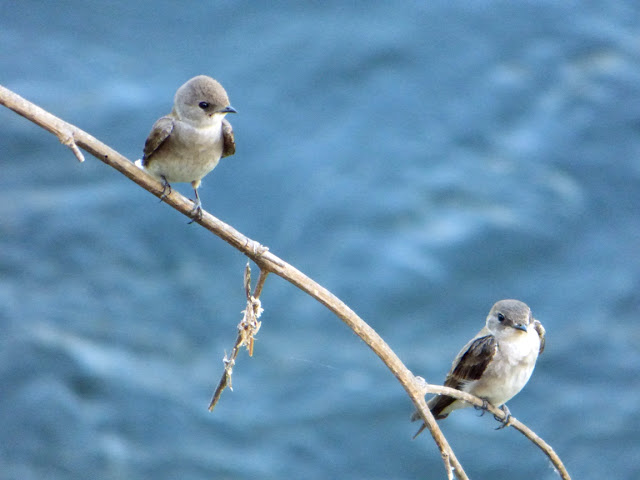I took a stroll along the Tuolumne River early this morning, probably the final such stroll for at least a month. Field season has arrived, and I'm going to be in the air and on the road a lot for the next few weeks. I don't do morning walks all that often, and by golly if there weren't some new birds to be seen! I kept hearing a high-pitched trill in the willow-oak thicket, and I finally spied a Bewick's Wren (
Thryomanes bewickii) singing away on a branch.
The identification was based on the beak size, the white eye streak, and the long barred tail (as always, I'll happily correct any mistakes. The Bewick's Wrens aren't exactly threatened, but they have gone into a steep population decline in the last few decades. They've essentially disappeared from the Eastern U.S. and Midwest. Their decline has been matched by the expansion of the range of the House Wren. The House Wrens will take over prime nesting hollows used by the Bewick's Wren.
The Tuolumne River Parkway trail follows two miles of the river where it emerges from the Sierra Nevada foothills onto the floor of California's Great Valley. It will have an opening ceremony on
Saturday May 21st at 10AM if you are in the area. I'm already seeing an increase in foot traffic, and someone is almost always parked at the new lot at the western end of the trail. There's been more trash, too, unfortunately. People can be such slobs sometimes. I'm walking with a trash bag in hand these days. Most folks, though, are of the nice kind, and I mostly see people enjoying themselves.





























